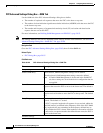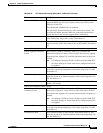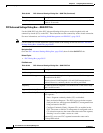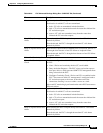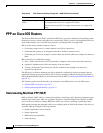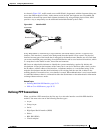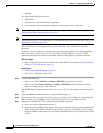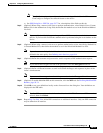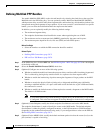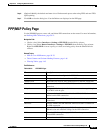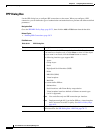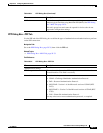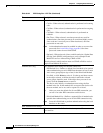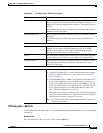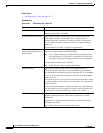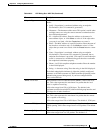
59-74
User Guide for Cisco Security Manager 4.4
OL-28826-01
Chapter 59 Configuring Router Interfaces
PPP on Cisco IOS Routers
Defining Multilink PPP Bundles
You enable Multilink PPP (MLP) on the selected interface by selecting the check box at the top of the
Multilink tab in the PPP dialog box. You can optionally enable Multiclass Multilink PPP (MCMP),
which prevents delay-sensitive traffic from fragmentation, and interleaving, which enables packets to be
interspersed among the fragments of larger packets. If you want to restrict a serial interface to a specific
bundle, you can select the multilink interface that represents that bundle.
In addition, you can optionally modify the following default settings:
• The maximum fragment delay.
• The endpoint discriminator that identifies the router when negotiating the use of MLP.
• The maximum receive reconstructed unit (MRRU) permitted by the router and its peers.
• The maximum queue depth for first-in, first-out (FIFO) and non-FIFO queues.
Before You Begin
• Select the interface on which the PPP connection should be enabled.
Related Topics
• Defining PPP Connections, page 59-71
• PPP on Cisco IOS Routers, page 59-70
Step 1 In the PPP dialog box, click the MLP tab. See PPP Dialog Box—MLP Tab, page 59-79 for a description
of the fields on this tab.
Step 2 Select the Enable Multilink Protocol (MLP) check box.
Step 3 (Optional) Configure one or more of the following options:
a. Whether to enable the multiclass feature that prevents delay-sensitive traffic from being fragmented.
This is achieved by placing delay-sensitive traffic in a separate class from regular traffic.
b. Whether to enable the interleaving of packets among the fragments of larger packets on the MLP
bundle.
c. Whether to restrict the physical link to joining only a designated multilink-group (defined by
selecting a multilink interface). If a peer at the other end of the link tries to join a different bundle,
the connected is severed.
d. Whether to modify the default amount of time required to transmit a fragment on the MLP bundle.
The default is 30 milliseconds.
Note If you enable interleaving without defining a fragment delay, the default delay of 30 seconds
is configured. This value does not appear in Security Manager or in the device configuration.
Step 4 (Optional) Under Endpoint, modify the default endpoint discriminator used on the MLP bundle.
The endpoint discriminator is used to identify the router on the MLP bundle. The default endpoint
discriminator is either the globally configured hostname, or the PAP username or CHAP hostname
(depending on the authentication protocol being used), if you configured those values on the PPP tab.
See Defining PPP Connections, page 59-71.
Step 5 (Optional) In the MRRU fields, modify the default maximum packet size that the router (local) or the
peer (remote) is capable of receiving.



